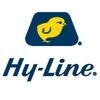Intermittent lighting improves resilience of broilers during the peak phase of sub-clinical necrotic enteritis infection
Published: October 13, 2025
Source : I. RODRIGUES 1, B. SVIHUS 2, M.R. BEDFORD 3, R. GOUS 4 and M. CHOCT 1 / 1 University of New England, Armidale, NSW, Australia; imendotr@myune.edu.au 3 AB Vista, United Kingdom. 2 Norwegian University of Life Sciences, Norway; 4 University of KwaZulu-Natal, South Africa.
Reviews made on the impact of intermittent lighting (IL) on broiler performance (Buyse et al., 1996; Rodrigues and Choct, 2017) attest to the consistency of such lighting programs in achieving better feed conversion rates. So far, no research has been conducted to assess the impact of IL on the susceptibility to and recovery from infectious diseases. We hypothesized that an IL program would increase broiler resilience to necrotic enteritis (NE). In order to test this hypothesis, a 2 x 2 experiment was conducted. There were two factors, namely, lighting schedule (continuous lighting (CL, 10-12 lux), 18L:6D vs. IL (IL, 10-12 lux), 1L:3D:1L:3D:1L:3D:1L:3D:2L:6D) and sub-clinical NE challenge (challenge vs. no challenge).
A total of 390 Cobb 500 mixed sex, day-old chicks (initial weight, 35.8 ± 5.0 g) were raised until d 7 under 23 h of light (L, 20 lux) and 1 h of dark (D) (23L:1D). At day 7, 12 birds were selected at random (d 7 weight, 154.8 ± 1.4 g) and allocated to one of 4 treatments in single floor pens (0.7 m x 0.70 m). Sub-clinical NE challenge was performed in half of the birds as per Wu et al. (2014). Birds and feeders were weighed weekly to ascertain the impact of both IL and NE on animal performance (Table 1)
Table 1 - Performance of broilers in the peak phase of CP Type A infection.

In the week following CP inoculation, NE negatively impacted FI and BWG of birds (P < 0.05). FI of birds submitted to IL was also lower than CL-fed birds (P < 0.05). FCRc was better for unchallenged animals (P < 0.005); however, the negative impact of the disease on efficiency was attenuated by IL (P < 0.05). In the overall GIT, lesion frequency was higher for challenged birds than for unchallenged birds (P < 0.05), but no interaction was observed between factors (P > 0.05). Throughout the trial, mortality remained low (< 1%) and unrelated to tested factors (P > 0.05). These data and those reported by Rodrigues et al. (2017) show that IL may have potential to minimize the negative impact of sub-clinical NE, especially during the peak phase of infection.
Presented at the 29th Annual Australian Poultry Science Symposium 2018. For information on the latest and future editions, click here.
Rodrigues I & Choct M (2017) Poult. Sci. (accepted for publication).
Rodrigues I, Svihus B, Bedford MR, Gous R & Choct M (2017) Poult. Sci. (in press).
Wu SB, Stanley D, Rodgers N, Swick RA & Moore RJ (2014) Vet Microbiol. 169: 188-197.
Buyse J, Simons PCM, Boshouwers FMG & Decuypere E (1996) World Poult. Sci. J. 52: 121-130.
Content from the event:
Related topics:
Mentioned in this news release:


AB Vista


Show more
Recommend
Comment
Share

Would you like to discuss another topic? Create a new post to engage with experts in the community.














